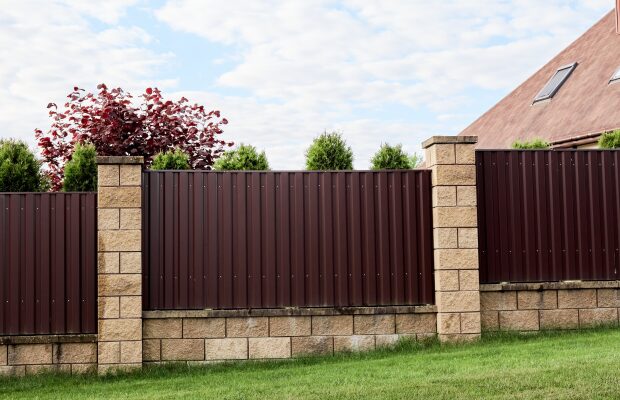Buying a home is an exciting journey, but it’s important to understand the additional costs that come with it. Beyond the purchase price, there are various expenses known as closing costs, which cover everything needed to finalise the sale and legally transfer ownership to you.
These costs can add up quickly, so having a clear picture of what they are, who pays them, and how to manage them will help you budget effectively. In this guide, we’ll break down what closing costs include, how much they cost as of 2025, and ways to reduce them.
What are closing costs?
Closing costs refer to the essential fees paid at the end of a property transaction. They ensure that all legal and financial aspects of the sale are properly completed. These expenses go beyond the price of the property and vary depending on factors such as the value of the home, mortgage requirements, and legal services.
For buyers, closing costs include various taxes, administrative fees, and professional services required to secure ownership of the property. Sellers also have some costs to cover, mainly estate agent fees.
Common closing costs for buyers
- Stamp duty – a tax on property purchases above £125,000
- Land registry fees – a fee to legally register your ownership
- Legal fees – payments to a solicitor or conveyancer for handling the paperwork
- Mortgage arrangement fees – charges from the lender to set up your mortgage
- Buildings insurance – required before your mortgage can be finalised
- Removal costs – expenses if you hire a company to help you move
These costs vary depending on the property price, location, and service providers, so planning ahead is key.
Related: How to buy a house: A guide on the process of buying a property
Who pays closing costs?
The majority of closing costs are covered by the buyer, but sellers also have financial responsibilities. As a buyer, you will be responsible for stamp duty, land registry fees, mortgage fees, legal fees, insurance, and removal costs.
Sellers, on the other hand, typically pay estate agent fees and legal fees related to the sale. Understanding these costs early helps you budget accurately and avoid unexpected financial pressure later.
Breaking down the costs
Stamp duty
Stamp Duty Land Tax (SDLT) is one of the biggest costs you’ll face as a buyer. As of April 1st 2025, the SDLT thresholds have changed:
- 0% on properties up to £125,000
- 2% on the portion between £125,001 and £250,000
- 5% on the portion between £250,001 and £925,000
- 10% on the portion between £925,001 and £1.5 million
- 12% on any amount above £1.5 million
First-time buyers now have a different threshold:
- 0% up to £300,000
- 5% on the portion between £300,001 and £500,000
- No relief for properties above £500,000
These changes mean that most buyers will pay more in stamp duty than under the previous system.
How to reduce stamp duty costs
- Buy a property below £125,000 to avoid paying stamp duty
- If you’re a first-time buyer, take advantage of the £300,000 exemption
- Use a stamp duty calculator to estimate your costs before purchasing
Land registry fees: registering your ownership
After purchasing a home, you must register your ownership with HM Land Registry. The cost of this service depends on the value of the property and how you apply.
- Online applications range from £20 to £305, depending on the property price
- Postal applications range from £45 to £305
This is a one-time fee but a necessary step to ensure that your home is officially registered under your name.
Legal fees: paying your solicitor
A solicitor or conveyancer will handle all the legal aspects of your home purchase, including contract checks, property searches, and liaising with the seller’s solicitor.
- Freehold properties: Legal fees range from £1,190 to £1,256
- Leasehold properties: Fees are higher, averaging between £1,506 and £1,587 due to additional complexities
How to reduce legal costs
- Compare quotes from different solicitors to find the best value
- Some mortgage lenders offer free legal services as part of their mortgage deal, which can help lower your overall costs
Mortgage fees: costs for setting up your loan
If you’re taking out a mortgage, you may be charged an arrangement fee by your lender. This is a cost for setting up the mortgage and can range from £0 to £2,000, depending on the lender and mortgage type.
How to negotiate mortgage fees
- Ask your lender if they can reduce or waive the arrangement fee
- Some lenders allow you to add the fee to your mortgage, but this means paying interest on it over time
- Compare mortgage deals to find one with lower associated fees
Buildings insurance: protecting your new home
Most mortgage lenders require buildings insurance before finalising your loan. This covers the cost of rebuilding your home in case of structural damage, but it does not include contents insurance for your belongings.
The cost of buildings insurance varies depending on the property size, location, and condition.
How to save on insurance costs
- Compare multiple insurance providers rather than accepting the first quote you receive
- Increase your voluntary excess to reduce your monthly premium
Taking the time to find the right insurance policy ensures you get the best coverage at the most reasonable price.
Removal costs: the price of moving
Once you’ve purchased your home, you’ll need to consider the cost of moving. According to Zoopla, hiring a professional removal service can make the process smoother, but it comes at a cost.
- One-bedroom flat: Approximately £420
- Three-bedroom house: Around £800 for a 15-mile local move
- Four-bedroom house: Up to £1,800
How to reduce removal costs
- Hire a van and move yourself if you have fewer belongings and want to cut costs
- Get multiple quotes from removal companies to find the best deal
- Declutter before moving to reduce the number of items that need transporting
- Move on a weekday instead of a weekend, as removal companies may offer lower rates on off-peak days
While hiring a professional removal service is more convenient, a DIY approach can significantly cut costs if you’re prepared for the extra effort.
How to reduce closing costs
Although some closing costs are unavoidable, there are ways to minimise your expenses:
- Negotiate mortgage fees – Some lenders are willing to lower or waive arrangement fees
- Choose an affordable solicitor – Comparing legal fees can help you find the best deal
- Consider lower-cost removal options – A self-move is much cheaper than hiring professional movers
- Shop around for insurance – Comparing quotes ensures you get the best deal for buildings insurance
- Plan your purchase strategically – If possible, buy a property under the stamp duty threshold to avoid extra costs
By planning ahead and exploring cost-saving options, you can reduce your expenses and keep more money in your budget for furnishing your new home or handling unexpected costs.
Related: Essential things to buy for your new house
Plan your move
Closing costs are a key part of buying a home, and knowing what to expect and how to manage them can help you stay in control of your finances. From stamp duty and legal fees to mortgage costs and removals, these expenses can add up quickly, so it’s essential to plan accordingly.
If you’re buying or selling a home, our experienced team at Parkers can guide you through every step of the process, ensuring a smooth and stress-free move.
Speak with your local Parkers branch today for expert advice and a free home valuation.







